Why is water left in the dishwasher?
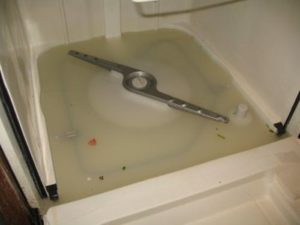 Is there water left in the dishwasher? Do not rush to panic, in most cases we are talking about a minor breakdown, which can easily be eliminated with your own hands. The main thing is not to do stupid things, namely, do not start the dishwasher again, do not pour any chemistry (like Domestos) into it, and even more so do not tear the grudge on the "iron assistant", pounding it on the walls. You need to sit down, calm down and start solving the problem step by step.
Is there water left in the dishwasher? Do not rush to panic, in most cases we are talking about a minor breakdown, which can easily be eliminated with your own hands. The main thing is not to do stupid things, namely, do not start the dishwasher again, do not pour any chemistry (like Domestos) into it, and even more so do not tear the grudge on the "iron assistant", pounding it on the walls. You need to sit down, calm down and start solving the problem step by step.
Reasons why the machine does not drain
First of all, let's decide on the question, how much water should remain at the bottom of the dishwasher after completing the washing mode in a normal situation? The manufacturer does not always indicate in the instructions that water should remain in the dishwasher, and consumers are in a hurry to breed panic out of the blue.
Experts say that in a normal situation, a puddle about 1 cm deep should remain at the bottom of the dishwasher in order to prevent the sealing gums from drying out. In a confined space, water will slowly evaporate, moistening the walls and ceiling of the washing tank with condensate, and therefore the sealing material in a circle. Wet gums will remain elastic for a long time, which means they will not let water through. If there is clearly more water in the dishwasher and the remains of food are floating in it, then there is a problem that needs to be addressed.
Conclusion! If the machine is operating normally, a small amount of clean water should remain at the bottom, but not water contaminated with food debris.
Specialists identify a number of reasons why the machine does not drain water. These are the reasons.
- The drain hole is too high from the floor and, as a result, the drain hose is not positioned correctly. In this case, the pump cannot pump out the waste water normally, and dirty water, although partially, remains at the bottom of the washing tank.
- Somewhere in the system there was a blockage. The filter screen, pipe or hose may become clogged, in any case, you will have to disassemble and eliminate the clog, otherwise the water will leave poorly.
- The water level sensor has broken, so the dishwasher control unit does not know about the amount of water remaining in the washing tank and, as a result, does not give the pump a command to pump out the water.
- The pump does not work normally. If the pump breaks completely, then the dishwasher will not be able to wash the dishes at all, since the water will not be pumped out at all. But if the pump works, then it does not work, the dishwasher will continue to carry out the washing program, but it will not be able to drain the water normally.
In 997 out of 1000 cases of poor drainage of water by a dishwasher, the above reasons exist. But in about 3 cases out of 1000, we are talking about a serious breakdown of the control module. If none of the above cases suits you, consult a good master.
How to check the connection?
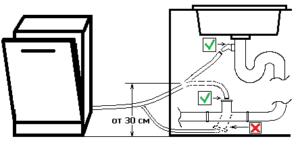 If you just bought a dishwasher and all the more connected it yourself without the help of a qualified craftsman, and the breakdown occurred immediately, it is quite possible that the machine was not correctly connected to the sewer. How to connect a dishwasher to the water supply and seweragedescribed by the manufacturer in the instructions. In particular, the most common mistake is the location of the drain hose to the sewer pipe or siphon too high.
If you just bought a dishwasher and all the more connected it yourself without the help of a qualified craftsman, and the breakdown occurred immediately, it is quite possible that the machine was not correctly connected to the sewer. How to connect a dishwasher to the water supply and seweragedescribed by the manufacturer in the instructions. In particular, the most common mistake is the location of the drain hose to the sewer pipe or siphon too high.
Please note that waste water is pumped out of the dishwasher by a pump with a relatively weak motor. If the connection point of the hose to the sewer is too high, then the pump will not have the strength to pump water, because it is under the laws of physics, by gravity will seek to return to the car. The pump will have to waste power to combat the siphon effect, and this will lead to a quick breakdown of the drain pump.
Important! The length of the drain hose can also affect the quality of the pump; the longer the hose, the greater the load on the pump.
What needs to be done?
- Make sure that the drain hose of your dishwasher does not exceed 2 meters.
- Make sure that the drain hose is not straight, but has some bend.
- Make sure that the height of the connection point of the hose to the sewer is no more than 40-50 cm from the floor.
If you have completed all three steps and found a mismatch somewhere, you need to redo the connection. If everything is OK with the connection, then you need to proceed to consider another cause of the malfunction.
How to identify and eliminate blockage?
As experts rightly point out, blockages are the main reason why the outflow of waste water is disrupted. After all, users of dishwashers often neglect the basic rules for caring for them, especially the rules for cleaning. Where can an unfortunate blockage form?
- On a metal mesh, which is located at the bottom of the washing tank near the rocker arm.
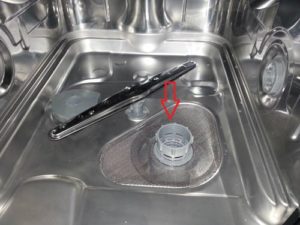
- In the coarse filter (such a cup with a grill, which is also at the bottom of the washing tank).
- In the drain pipe.
- In the drain hose.
If you have never cleaned the dishwasher, you need to start by cleaning the fine and coarse filters, as this is the simplest action. First we pry and pull out the metal mesh, and then unscrew the “glass”. We rinse both under the stream of warm water, not forgetting to pre-treat with a sponge with dishwashing detergent. Put the filters in place.
Note! To better clean the dirt from the filter, you can soak it in warm water with a detergent, and then rinse with clean water.
Now check for a clogged drain hose. To do this, it must be disconnected from the siphon or sewer pipe. Substitute a small container to drain stagnant water, then unscrew the hose and rinse it well with hot water. After all the procedures, it would be nice to dry clean the dishwasher using a special certified product.
How to check and repair the pressure switch, drain pump?
The connection is correct, there is no blockage in the dishwasher either, why is the machine still not draining normally? Apparently there is something else. Experts recommend checking the pressure switch of the dishwasher. The pressure switch determines the amount of water in the dishwasher; if it does not function, the machine will not drain the water to the end. Check and replacing the pressure switch in the dishwasher - This is a more complicated event related to the dismantling of the dishwasher. It is better to delegate this work to a specialist, but you can do it yourself.
When you get to the pressure switch, do not forget to check the operation of the contacts of its sensor. Often the contacts burn out, and because of this, the device stops working. If everything is in order with the water level sensor, check the pump. In general, you can determine how the pump works even before disassembling the dishwasher, if you listen to how it drains the water, what sounds it makes. A poorly running drain pump usually buzzes violently, and there is practically no murmur of water.
Important! Some to watch how the dishwasher pump works, tilt the working device and look into the pan. Experts do not recommend doing this, you can disrupt the sensors, which will lead to a more serious breakdown.
To get to the pump, you need to unplug the dishwasher, disconnect the hoses. Then you need to put the dishwasher on the back wall, after putting rags under it. In most cases, you will immediately get access to the pump through the bottom, without having to remove any walls. We do the following:
- we find contacts on the pump casing;
- take a multimeter, set the smallest value in Ohms;
- set the probes of the device to the contacts and measure the value, which should be within 1000;
- If the electrician of the pump is in order, unscrew it and clean it thoroughly. It happens that a foreign object gets stuck in the impeller of the pump, slowing its rotation;
- if the pump is clean but still not working, either replace the pump, or invite a wizard to help him figure out the problem.
To summarize, we note why the dishwasher refuses to properly drain the water, there are many reasons, but one consequence is a full tank of dirty water. To cope with the problem, you will have to step by step check all possible causes, only in this way will you be able to find the truth. Have a good repair!
Interesting:
Reader Comments
- Share your opinion - leave a comment
Headings
Washing machine repair


For buyers
For users

Dishwasher

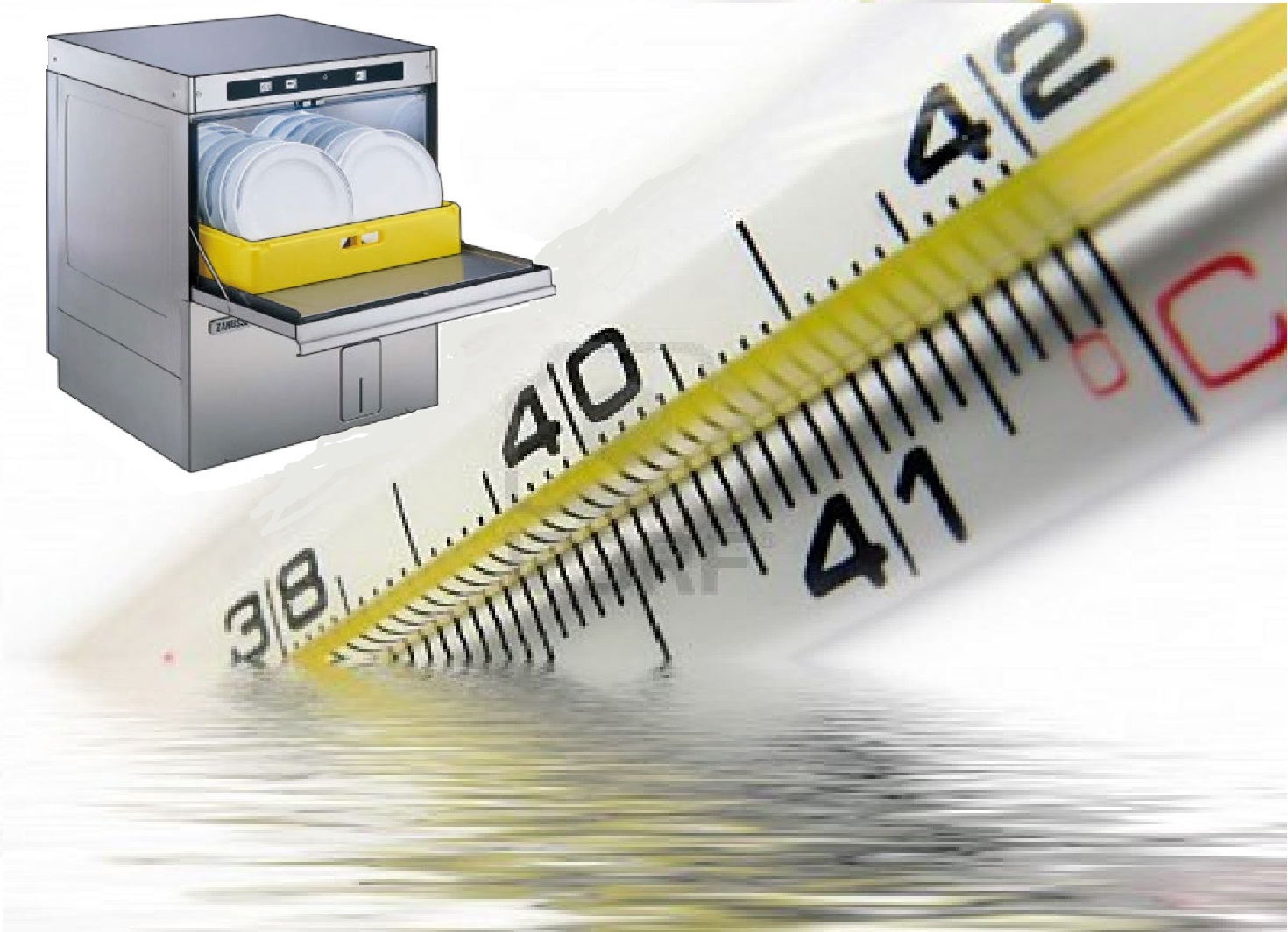
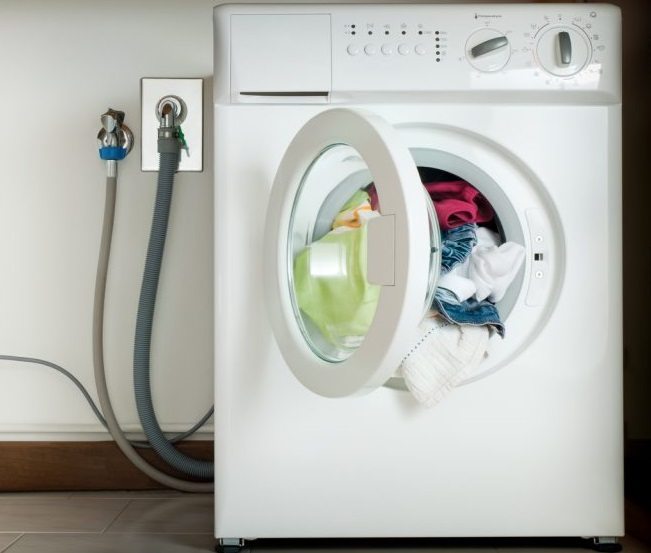
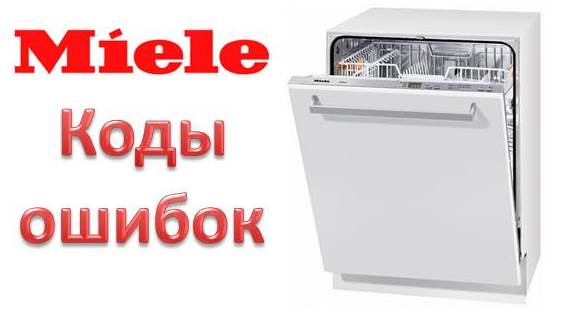

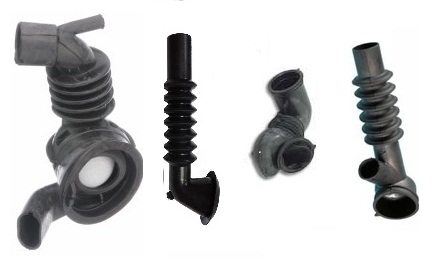












Add a comment